#60yearsofJamesBond: On Her Majesty's Secret Service
The next in this series looking back through the history of James Bond goes back to George Lazenby's only outing in the role... and one of the most radically different films the series has ever produced.
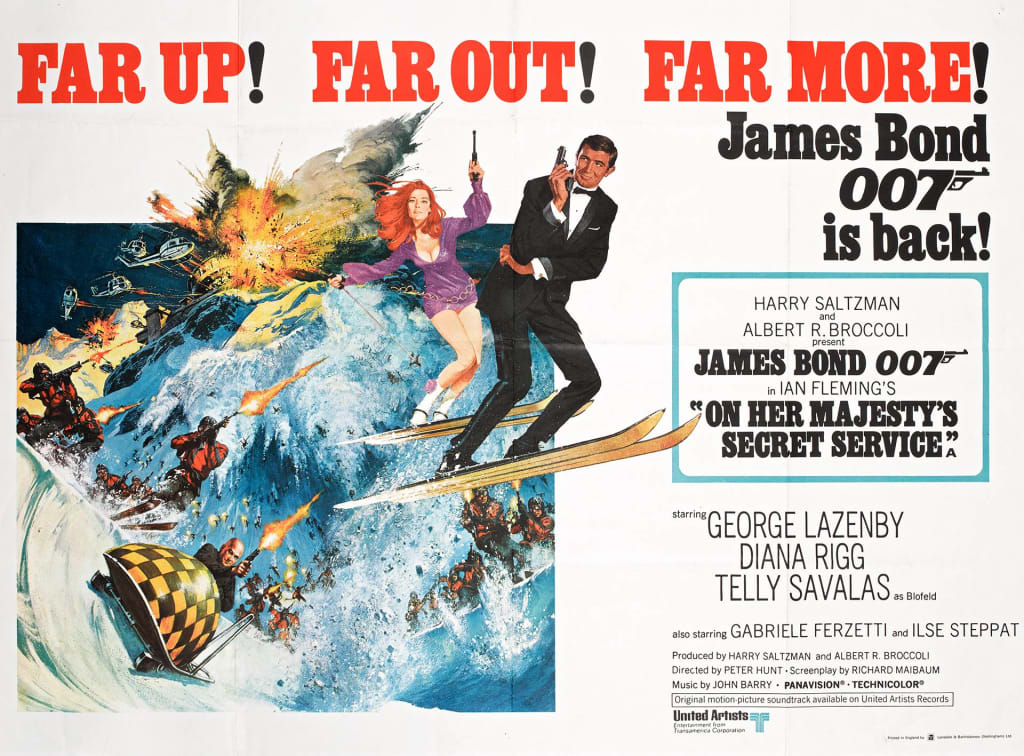
When Sean Connery decided to leave the role of James Bond after production on "You Only Live Twice", it was decided that, rather than let the Bond series end, the role would be recast. But who would be suitable for the part that Connery had basically made his own? One candidate whose name cropped up again and again was Roger Moore. However, he had commitments to the ITC series The Saint, and so wasn't available. Other names in the frame included John Richardson, Anthony Rogers, Terence Stamp, Oliver Reed and Timothy Dalton. Over 400 actors, in total, were seen for the part: probably one of the most extensive casting sessions in cinema history for a leading role. And the name chosen from this huge process? A virtually unknown Australian advert actor called George Lazenby. It was quite an unusual choice to say the least, especially considering the standard he would be measured against. Nonetheless, it was Lazenby who the producers wanted, and he made his debut, and, indeed, his final appearance as Bond in 1969's "On Her Majesty's Secret Service". This was to be a Bond film like no other: not only would Bond be seen to be more vulnerable than previously, there would be a greater emotional heart, an attempt to push the boundaries in terms of effects and stunts, and perhaps the most shocking ending to a Bond film in the series' 60 year history... And it's this daring, radical approach that makes this one of the very best films in the franchise to date. From beginning to end, this is something very, very special, and it isn't afraid to break with established tradition in order to be successful.
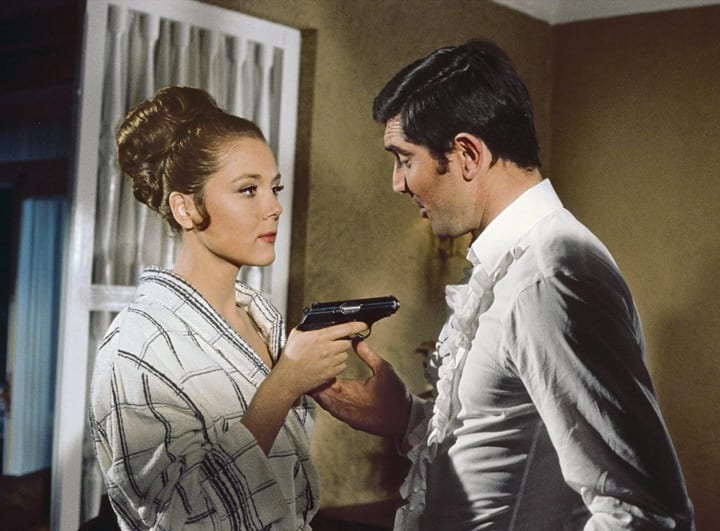
Opening with a fast-paced pre-titles sequence that sees Bond save a mysterious woman from drowning, we launch right into his search for Ernst Stavro Blofeld, the ominous head of SPECTRE, all the while running into the enigmatic Countess Tracy di Vicenzo. (Who it turns out Bond saved in the pre-titles.) It soon becomes clear there is more to her than meets the eye, and she will be the key to Bond finding Blofeld's secret lair. But James is about to find more than he bargained for... perhaps the thing he never expected to find in his life as a secret agent... Right from the beginning of the film, you get the sense you are in for something very special with this film. It stands out: not just visually, but in the way the characters are treated. There's few attempts to hew to Bond cliché here, and this film is all the better for it. There's no Q briefing, no gimmicky gadgets, no Bond villains with inappropriate names. In terms of a traditional adaptation of the Ian Fleming novels, "On Her Majesty's Secret Service" has to be one of the most traditional. In a way, it's a bit more of a throwback to something like "From Russia With Love" or even "Dr. No", in so much as it is a bit gritter, and features a bit more rough-and-tumble than some of the more glossy Bond films featuring Connery. Of course, like the book, this film exposes the heart of James Bond more than any other, and gives us a glimpse of the character in a more domestic setting. Unlike previous films, where Bond wisecracks his way through girls and villains regardless, either bedding them or punching their lights out, he, and by extension the audience, is given a chance to explore the character in a more domestic setting. By no means is this a kitchen-sink drama (heaven forbid!), but it offers Bond the chance to see the life he could lead. The life of domestic bliss, with perhaps one of the only women he could ever truly love. It certainly makes this film stand out, and I think it's one of the reasons why this film has had such a huge critical reappraisal in recent years. Because, put next to some of the Daniel Craig films like "Spectre", or especially "No Time to Die" (which borrows a lot from "On Her Majesty's Secret Service"), you can really start to see that what the producers wanted to do with this film was years ahead of its time. The kind of emotional vulnerability Bond shows here wouldn't be seen again until "The Living Daylights" in 1987, and now is part and parcel of the character. While it may not have been successful at the time, looked back on retrospectively, it shows a huge degree of foresight, and makes this film stand out in the early Bond years against a background of wisecracking action flicks. It's not something you can do all the time (what makes this film so special is the fact that it's a one-off) with Bond, but it is something that should be done, every now and again, just to remind us there's a beating heart inside our favourite super-spy: it's just that he often keeps it well hidden. And, as this film demonstrates, perhaps with good reason.
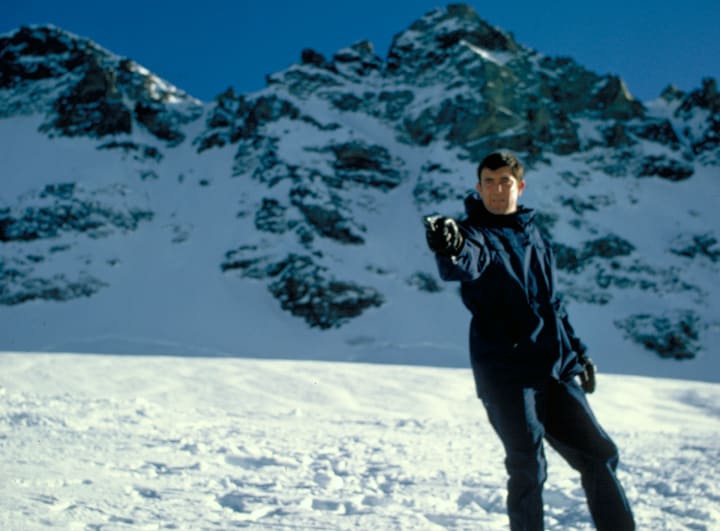
Of course, one of the biggest talking points regarding this film (and it is one that follows on neatly from the above paragraph) is George Lazenby's one-off take on James Bond. Let me put my cards on the table straight away and say that, yes, Lazenby is easily the weakest actor to play Bond, there's no question of that. However, that still doesn't mean he doesn't give it a good try, and there are parts of this film where he genuinely shines as Bond. It was definitely an interesting choice to cast someone more famous for being a swimwear model, rather than any acting roles. After all, the other five Bond actors to date have all had established acting pedigrees (even Sean Connery, who, while being a relative unknown, had some highly-regarded television credits to his name when he was cast as Bond), so, naturally, you would have assumed that the producers would have sought someone similar for Connery's replacement. However, they went with Lazenby, and I do see the appeal: he was a conventionally attractive man who looked the part in a suit, had a strong physical presence and was able to pull off the upper-class English accent. But, while Lazenby gets lots of chances to show off all these skills, the part of Bond does require a depth that, perhaps, Lazenby simply doesn't possess, at least not in this film. There are moments where you can see he is growing in confidence, aided I suspect by the strength of Diana Rigg's performance as Tracy. With another film under his belt, I reckon he could have had the chance to solidify his take on James Bond, and to add dimensions on his take on the character. It's just a shame he was convinced by his agent that Bond wouldn't survive into the 1970s, as, with another film to give him a chance to show a greater range to his version of Bond, as well as to develop the character he presents here, I suspect we'd be regarding him much more highly. No matter what you think of Lazenby (I know plenty of people who find him wooden and a poor imitation of Connery), one film isn't really enough time to establish your definitive version of Bond, no matter how good an actor you are. Even top-class Bonds like Craig and Connery (who are the two pretty much defined as the gold-standard) are only seen as the gold standard because they had time to develop their takes on the character. No one could do it in one film, so Lazenby is at a disadvantage over every other Bond, even Timothy Dalton. I think there was potential there for something really strong, and I think that, maybe, the production team weren't really ready to commit to another actor as James Bond. (After all, they did raid the piggy bank just to get Sean Connery back in "Diamonds are Forever".) By the time Roger Moore was available in 1973, it felt like Harry Saltzman and Albert Broccoli were much more comfortable with letting another actor reinterpret the role, and offer a different stance to the one Connery created. But, at this point, Lazenby really just ended up being the victim of poor circumstances and bad advice. Much like most in life, really?
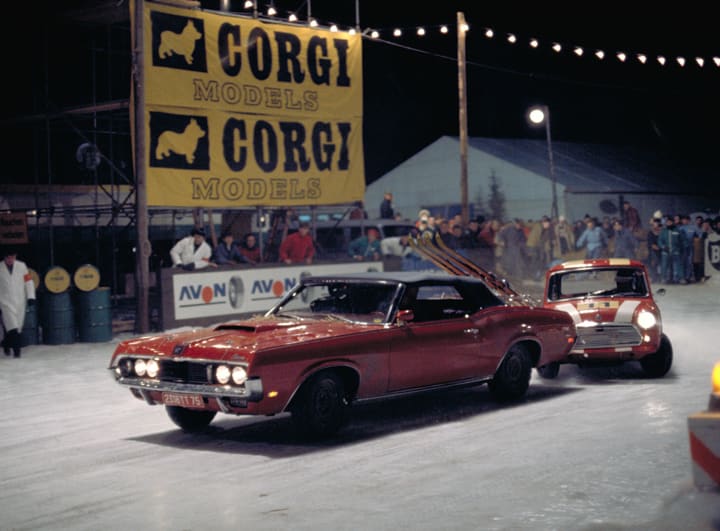
As I mentioned at the top of this article, "On Her Majesty's Secret Service" is very different to any Bond film before, and this isn't just in the way that the film treats its leading character. While the basic plot may be similar to that of a Bond film, the way it all comes together is completely different. From beginning to end, all the things you expect either don't happen, or don't happen in the way you expect. This film really does keep you on your toes, and, if you're going in expecting the traditional Bond experience, you may be disappointed. However, if you keep your mind open, this offers something a little bit different from what you would expect from a Bond film, and breaks away from what might be seen as a straightjacket formula that prevents true development and innovation. For, despite the fact that we all love the Bond franchise, it is true that most films in the series are made up of the same basic elements that are just arranged in different ways. "On Her Majesty's Secret Service", however, isn't like that. There's a lot more focus on the burgeoning love between Bond and Tracy, and even when we get to the bits of the film that are more like the Bond we know and love, there's perhaps a harder, more grounded edge to them than anything we had seen before. Blofeld's plan, while extravagant in its construction, feels much more terrifying and much more apocalyptic than anything seen before or since, (even "You Only Live Twice" and "Thunderball" don't quite reach the stakes and tension seen here) and the ending conclusion stands out. Normally, Bond comes up with some crazy plan, guns down the enemies all by himself, destroys the MacGuffin and gets the girl out of the villain's base before it blows up. However, here, he has to bring on-board Draco's mercenaries to attack Piz Gloria, and even his escape from Blofeld's headquarters after going undercover is more hard fought and tough than these scenes in other James Bond films. The film plays fast and loose with the idea that Bond is an invulnerable instrument of the British Empire, even down to the idea that he is ready to resign over M's decision to suspend Operation Bedlam and his search for Blofeld. I can't really think of another instance when Bond comes close to quitting over his superior's decisions (it's harder to count "No Time to Die", as Bond has already left service by the beginning of the film), and it remains one of the standout moments from the film. I mean, yes, at its core, this film does feature elements that are seen as key in a Bond film. But these elements don't come together in the same way as most Bond films, and it marks "On Her Majesty's Secret Service" out as something very different and very special.
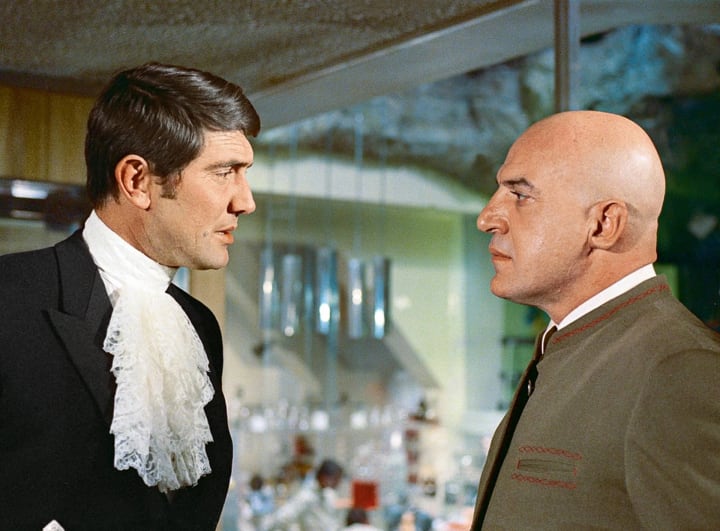
Like the plot of this film, the characters are something a little bit different to the standard Bond tropes that populate the franchise. There's an attempt, especially with our female lead in the form of Tracy di Vincenzo, to develop these stock characters beyond what we've seen before, and offer something with wider appeal to an audience which must have felt somewhat excluded by previous Bond films. Leading the charge and change is, as mentioned above, Tracy, who is a very different prospect to the frankly interchangeable Bond girls that preceded her. She's a fully-rounded character with her own agency and purpose, and, while her opening scene may see her being saved by Bond as she tries to commit suicide (which is never mentioned again!), she is the character who very much calls the shots in their relationship. She manages to do this without reducing Bond's agency as a character, but the writers of the film offer us someone who stands equal to Bond, and someone who offers him the only woman he could ever really love. What makes Tracy such a compelling figure for the audience, however, is Diana Rigg. Probably one of the greatest bits of casting in the sixty year history of James Bond, alongside Judi Dench as M and Robbie Coltrane as Zukovsky was getting Diana Rigg, most famous for playing Emma Peel in the ITC spy-fi series The Avengers, to play James Bond's wife. It's a irresistible prospect, and once it happened, it's hard to imagine anyone else playing the part. She's simply wonderful, and she brings both class and vulnerability to the role of Tracy. Her dynamic with George Lazenby is wonderful, despite his inexperience, and she helps to bring that complex relationship to life even when Lazenby isn't quite as convicted as he needs to be. In terms of villains, we are introduced to a new version of Blofeld, here played by Telly Savalas. While not quite as instantly sinister as Donald Pleasence's version, Savalas has a wonderful theatricality that makes what he's planning to do even more horrific. Sure, he wants to dominate the world. But there's a pleasing lightness to the whole endeavour that means he comes across as charmingly sinister, and it's one of the best Bond villain performances in the series to date. The rest of the cast are a who's who of great talent. The 'Angels of Death' are incredibly glamorous, and, while it's probably the closest this film gets to traditional Bond flick (gorgeous girls designed to excite and thrill the traditionally male audience), they do serve their purpose well, and are not a real distraction from what this film is trying to do. It helps that great actors like Catherine Schell (who would later go on to play Maya in Space 1999) and Joanna Lumley (who would find even greater fame in The New Avengers, Sapphire and Steel, Absolutely Fabulous, and her documentary and charity work) have been brought in to play them, and so they end up feeling like real characters, rather than just objects of beauty. Ilse Steppat and George Baker make for great foils for Bond (Steppat particularly, as Blofeld's sinister henchman Bunt), while Bernard Lee, Lois Maxwell and Desmond Llewelyn once again excel in pretty thankless, but necessary, roles. Maxwell, in particular, probably gets one of her strongest showings as Miss Moneypenny here, as she saves Bond from making one of the biggest mistakes of his career by resigning, as well as her tears at Bond's wedding. There's a genuine attempt to focus on character and acting in this film, and, for the most part, they are hugely successful in this ambition.
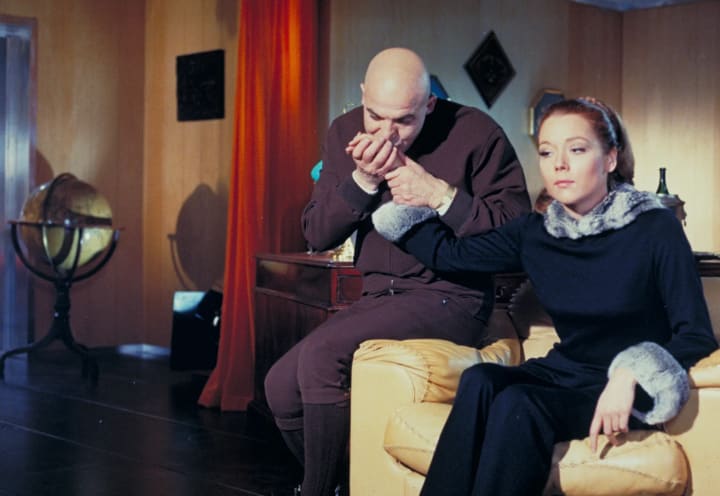
While this film is rightly lauded for being daring and ambitious regarding the plot, characters and direction for James Bond, I would say that the production trumps all of these. This has the look and feel of a modern film, never mind a film that's nearly 55 years old, in terms of pace and cutting. Director Peter Hunt (in his one and only directing credit on the Bond franchise) is willing to push the boundaries and try new things, and the approach pays off with one of the most forward-looking films of this whole period, never mind just James Bond films. You can tell that Hunt came from an editing background (he's worked on every Bond film up to that point as an editor or second unit director), because this film features such a strong emphasis on cross-cutting, fast paced scenes and POV shots of action and chase sequences. Sure, previous Bond films had been ground-breaking: the work of Guy Hamilton on "Goldfinger" still looms large here. But the work of Hunt and his team on "On Her Majesty's Secret Service" stands out as vastly different to anything that went before. It's much more psychedelic than any prior Bond film, which fits very nicely with the late 60s being a very trippy time. (Even if you weren't on drugs.) It makes full use of colour, which no previous Bond film ever really attempted to do. There's lens flairs, complicated film effects and so many things that modern films take for granted, but must have taken so long to achieve back in 1969. Every shot is considered, thoughtful, and it comes through in the final production as a very sophisticated piece of work. The sets and costumes are equally impressive, and are much more flamboyant and extravagant than the more restrained and chic outfits and sets of earlier Bond films. It fits with the idea of taking the Bond franchise in a different direction from that seen with Sean Connery in charge, and this approach continues with the music. John Barry's score is one of the best in the franchise's history: it's unlike his usual operatic music, and reflects a changing attitude towards the franchise that took a few years to really bed in. It wouldn't be until 1977's "The Spy Who Loved Me" that electronic instruments and synthesised scores would be used in Bond films more often, (by which time, film scores were moving in the opposite direction again) which was a shame considering just how successfully these instruments and styles are employed here. It offers something new and different: as does the title music and Louis Armstrong's "We Have All the Time in the World", which serves as the love theme between Bond and Tracy. For only the third time, (and the last, until now) a Bond film opens without a title song, and I think it works here, because I can't imagine anything suiting the tone of the film. Armstrong's song is wonderful, but it isn't a title Bond song, quite honestly, and nothing else would quite fit, in my opinion. The production elements all come together to make something really special, and yes, this film was always going to be great, I think, based on the script and the acting talent. But Hunt's direction and Barry's music especially make this exceptional, and an absolutely unmissable Bond film for those with an interest in innovative direction, music, costume and editing.
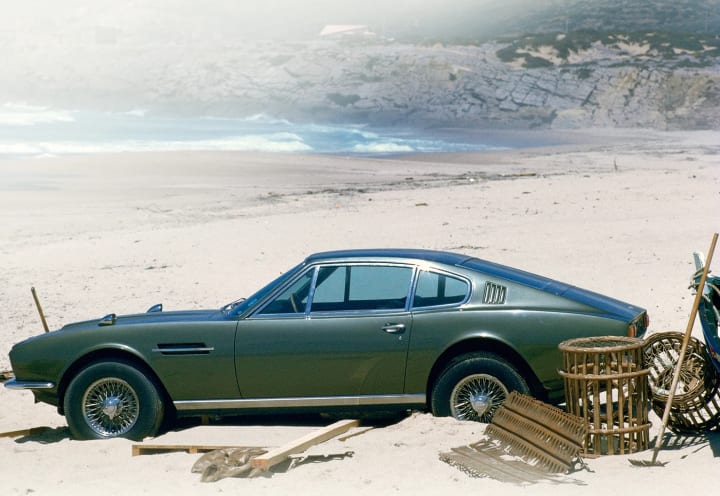
I could write thousands and thousands of words on "On Her Majesty's Secret Service", I really could. It remains one of the high points of the James Bond franchise, and one of the few times when the producers actually attempted something different, rather than reusing the "Goldfinger" formula again. Not only does this film attempt to do the impossible by giving Bond a genuine romantic partner and wife, it also attempts to distance itself from the hard man Sean Connery created, present a more vulnerable side to Bond, and move Bond in a different direction as he approached the 1970s. While this film is now seen as the critical classic that it always was, contemporary reaction was more mixed, however, with George Lazenby's reinterpretation of Bond coming in for heavy criticism. However, any critical comment of Lazenby was irrelevant anyway: during production of "On Her Majesty's Secret Service", Lazenby was advised by his agent that Bond would not survive into the decade of liberation and antidisestablishmentarianism the 70s promised to be, and he decided to quit the role before his first film was even released. Once again, the Bond producers would have to recast the role. And, while "On Her Majesty's Secret Service" did well at the box office, its takings were down on the other previous films. United Artists decided that this was because the film lacked one key element. As such, the producers would be pulling out all the stops for the next Bond film in an attempt to lure back the man who made the franchise a success. It turns out Sean Connery wasn't done with James Bond just yet...
You can purchase "On Her Majesty's Secret Service" on Blu-Ray from Amazon by clicking on the link below, and from all good DVD and Blu-Ray shops.
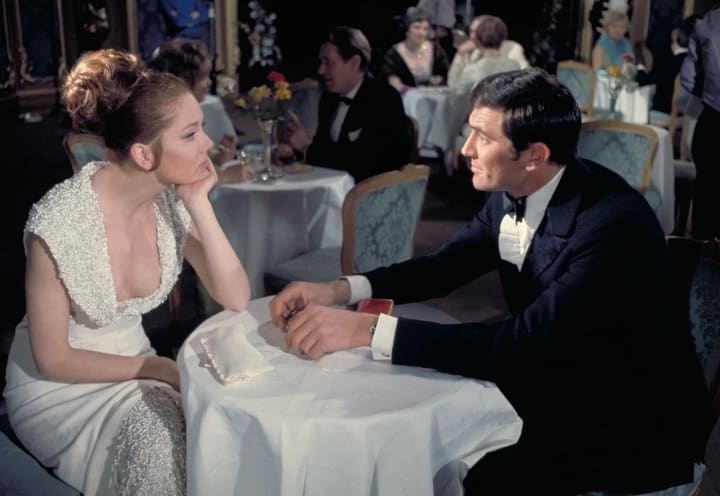
All pictures copyright to EON Productions. Thank you very much for reading.
JAMES BOND WILL RETURN...
About the Creator
Joseph A. Morrison
26. Fan of Doctor Who, Blake's 7, The Prisoner and more old-fashioned TV. Reviewer, wannabe writer and general twit.

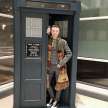




Comments
There are no comments for this story
Be the first to respond and start the conversation.